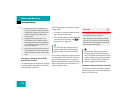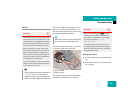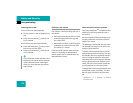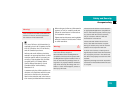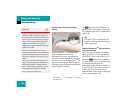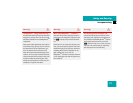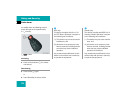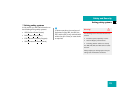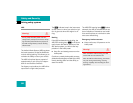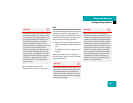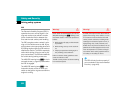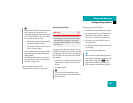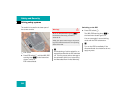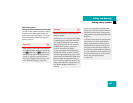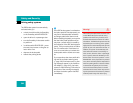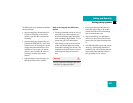
80
Safety and Security
Driving safety systems
ABS
The Antilock Brake System (ABS) regulates
the brake pressure so that the wheels do
not lock during braking. This allows you to
maintain the ability to steer your vehicle.
The ABS is functional above a speed of
approximately 5 mph (8 km/h) indepen-
dent of road surface conditions.
On slippery road surfaces, the ABS will re-
spond even to light brake pressure.
The - indicator lamp in the instrument
cluster comes on when you switch on igni-
tion. It goes out when the engine is run-
ning.
Braking
If the ABS activates during braking, the
ABS/ESP warning lamp v in the instru-
ment cluster dial flashes. Because of the
SBC brake system, you will not feel any
pulsation in the brake pedal.
̈ Keep firm and steady pressure on the
brake pedal.
Continuous, steady brake pedal pressure
yields the advantages provided by the ABS,
namely braking power and the ability to
steer the vehicle.
The ABS/ESP warning lamp v flashes
whenever the ABS is activated which can
be an indication of hazardous road condi-
tions and functions as a reminder to take
extra care while driving.
Emergency brake maneuver
̈ Keep continuous, full pressure on the
brake pedal.
Warning! G
Do not pump the brake pedal. Use firm,
steady brake pedal pressure instead. Pump-
ing the brake pedal defeats the purpose of
the ABS and significantly reduces braking
effectiveness.
Warning! G
When the ABS is malfunctioning, the BAS
and the ESP are also switched off.
When the ABS is malfunctioning, the wheels
may lock during hard braking, reducing
steering capability and extending the brak-
ing distance.



